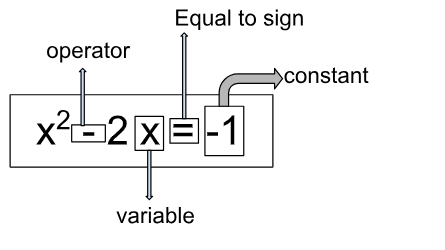Table of Contents
Equations, the backbone of mathematics, can express the balance and equivalence of quantities. Equations enable us to capture and analyze relationships concisely and precisely with the fundamental “equal to” symbol serving as their centerpiece. From linear and quadratic to cubic and beyond, the diverse types of mathematical equations provide us with tools to solve problems, unlock mysteries, and explore the vast realms of mathematical concepts.
This article will give us a sneak peek into the world of equations and their significance in mathematics.
What are Equations?
Equations are mathematical statements that establish an equality between two expressions. They consist of variables, constants, and mathematical operations, with the “equal to” symbol as a crucial link between the two sides. Mathematical Equations allow us to solve for unknowns, analyze relationships, and make predictions.
For example, in equation 2x + 3 = 7, ‘x’ represents an unknown value that can be determined by solving the equation. Another example is the famous Pythagorean theorem, a² + b² = c², which relates the lengths of the sides of a right-angled triangle.
Equations serve as powerful tools in various mathematical disciplines, unlocking the intricacies of the mathematical world.
Parts of Equations
Equations consist of several essential components that work together to convey mathematical relationships. The key parts of a mathematical equation include:
| Variables | These symbols, typically represented by letters like x, y, or z, represent unknown quantities or variables we aim to solve. |
| Constants | These are fixed values that remain unchanged throughout the equation. |
| Operators | Mathematical operations such as addition (+), subtraction (-), multiplication (×), division (÷), and exponentiation (^) are used to manipulate and relate the different components of an equation. |
| Equal Sign | The equal sign (=) denotes the equality between the two sides of the equation, indicating that the expressions on either side have the same value. |
By combining these elements, equations provide a concise and precise representation of mathematical relationships, allowing us to analyze, solve, and understand various branches of mathematics and beyond.

How to Solve an Equation?
An equation can be considered a balanced weighing scale, where both sides have equal weights. The balance remains intact by performing the same mathematical operations on both sides. For example, consider the mathematical equation 3x – 8 = 4. We add 2 to both sides to maintain the balance, resulting in 3x – 8 + 8 = 4 + 8, which simplifies to 3x = 12. Dividing both sides by 3 gives us x = 4, the solution to the equation.
To solve a basic equation with one variable, follow these steps:
- Gather all terms with variables on one side and constants on the other side by applying arithmetic operations.
- Combine like terms by performing addition or subtraction.
- Simplify the equation to obtain the solution.
For instance, consider the equation 3x – 5 = 7. To isolate the variable term, add 20 to both sides: 3x – 5 + 5 = 7 + 5. This simplifies to 3x = 12. Finally, dividing both sides by 3 yields x = 4, which is the solution to the equation.
Types of Equations
Equations come in various forms and types, each with its own unique characteristics and methods of solution. Here are some of the most common types of equations:
- Linear Equations
- Quadratic Equations
- Cubic Equations
- Exponential Equations
- Logarithmic Equations
- Trigonometric Equations
These are just a few examples of the many mathematical equations encountered. Each type has unique properties, solution methods, and applications in various fields of study. Understanding and effectively solving equations are crucial in problem-solving and advancing our understanding of mathematical concepts.
To know more: check, Types of Equations
Frequently Asked Questions on Equations
Define an equation with an example.
An equation is a mathematical statement that is the combination of two expressions connected by an equal sign. For example, 3x – 5 = 16 is an equation. Solving this equation, we get the variable x's value as x = 7.
What are the types of equations?
Some of the important types of equations are: Linear equations, Quadratic equations Cubic equation Quartic equations Differential equations Parametric equations
What is the equation of the y-axis?
The equation of the y-axis is x = 0 since the y-axis is parallel to itself at a distance of 0 from it.
What are the parts of an equation?
Several components such as terms, coefficients, exponent, arithmetic operator, equal sign and constants combine to make an equation.






